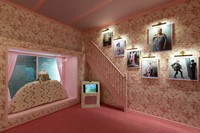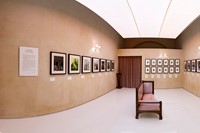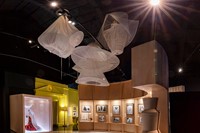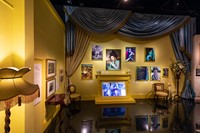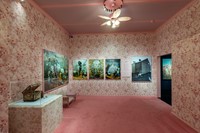Wonderful Things, the long-awaited exhibition of photography by Tim Walker, opens at the Victoria & Albert Museum in London this weekend. Announced earlier this year but in the works for around three years, the show is the largest exhibit of Walker’s photography to date; he has created ten new series of photographs specifically for Wonderful Things, each one inspired by an object from the museum’s collections and archives. During a year spent “floating down the corridors” and unpacking boxes with the V&A’s curators, Walker was looking for “sublime objects” that provoked an emotional response. “It’s about me finding a charged object that has illuminated and touched me, and then I’ve turned that into a world,” he tells AnOther. “Hopefully you come out of it feeling inclined to go and create your own worlds, articulate your own fantasies.”
Walker’s interest in photography was sparked while immersed in another archive more than 25 years ago, when he spent a year working on the Cecil Beaton archives housed in the Condé Nast Library. He was assistant to Richard Avedon in New York before shooting his first fashion editorial for British Vogue at the age of 25; in the quarter of a century that’s followed, his idiosyncratic fashion photography has weaved between the overwhelmingly beautiful, awe-inspiring and strange. Walker’s transporting photography, in which surreal characters might appear in extraordinary, intricate worlds (with scenography often created by his longtime collaborator Shona Heath, who has also designed Wonderful Things), has been published in AnOther, Another Man, Dazed, Vogue, W Magazine and countless other titles.
The photographer himself is in awe of the V&A and its collections. Speaking to Walker for AnOther Magazine A/W19, he describes his excitement at being able to scour the museum’s archives, clearly moved by the process and the stories he discovered there. Here, Walker hones in on an object from the V&A that inspired one of his ten new series: an embroidered casket made by a teenage girl in the 17th century.
“I spent a lot of time in what they call the archive at the V&A, in each different department with the curators. It was extraordinary, such a privilege and an education. There’s so much nourishment there – which is the point of the exhibition. When you walk into the V&A there’s a huge plaque at the main entrance that talks about inspiration for the people. It’s a free museum, anyone can walk in and engage with the most sublime expressions of human beauty for free. The Victorian era was very charitable, and I love that notion of the V&A being there for all to be inspired by.
“I spent a year, if not longer, wandering around. I went on this massive snoop, looking at everything. I then spent a year making photographs inspired by these objects”
“My ambition when I first took on the commission was ‘oh my God, I’m going to look at everything in the V&A,’ but of course you can’t. Everything is in a box in a box in a box and everything is white gloves, and you’ve got to unwrap this and that. After six months, I thought OK, you’ve got to cut the cord see what you come across by chance – which is very much my take on life in general, right now anyway. The chaos of life, bring it on. So I just floated down those corridors, completely serendipitous; I spent a year, if not longer, wandering around. I went on this massive snoop, looking at everything. I then spent a year making photographs inspired by these objects.”
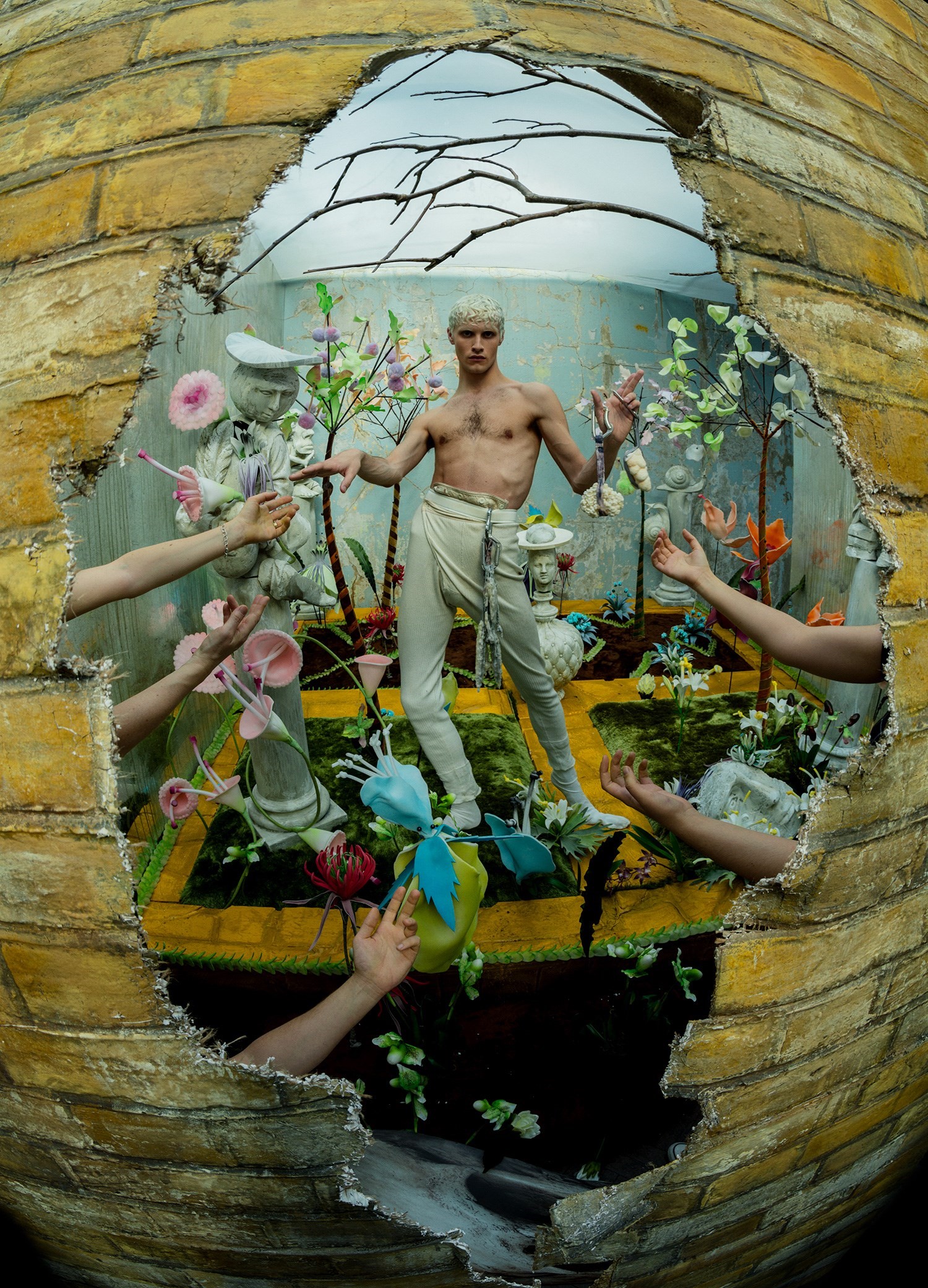
“I was looking to be illuminated. Certain objects, without rhyme or reason, are charged. They illuminate your heart, they sing very loudly and you don’t know what they’re going to be. I was shown a chest, made by a 15-year-old girl in around 1675. It’s embroidered on the outside with tales of chivalry and love and romance and poetry, and it’s got secret drawers in it where she would’ve kept her love letters or jewellery or treasure. The most touching thing about this object, what really moved me, is that when you lift the lid there’s a garden. Made out of glass and clay and there’s a little crazy-paving pathway, and all these flowers made of glass and beads. That object pulsates with privacy and intimacy and detail – I could see her and feel her. It intrigues me because of time – because it’s so long ago and the amount of time people had, that a 15-year-old was that industrious and created this secret world for herself. It’s a very charged thing.
“That object pulsates with privacy and intimacy and detail – I could see her and feel her”
“This casket hasn’t ever been exhibited, no one’s seen this before, and the curator was saying ‘when you look at this box, doesn’t it remind you of an iPhone?’ We all have apps, secret places where we put things on our phones. It’s an innate need in humanity to have private worlds. We need private worlds, and they’re related to photography as well. A lot of photography, for me, is about a world in my head that becomes articulated as an environment which I can walk into. The curator at the clothworkers department showed it to me because she saw a correlation – she’d looked at my photography, and she said she thought a lot of it was about creating private worlds, and worlds that you fantasise about. As a photographer, you’re merely documenting your imagination.”
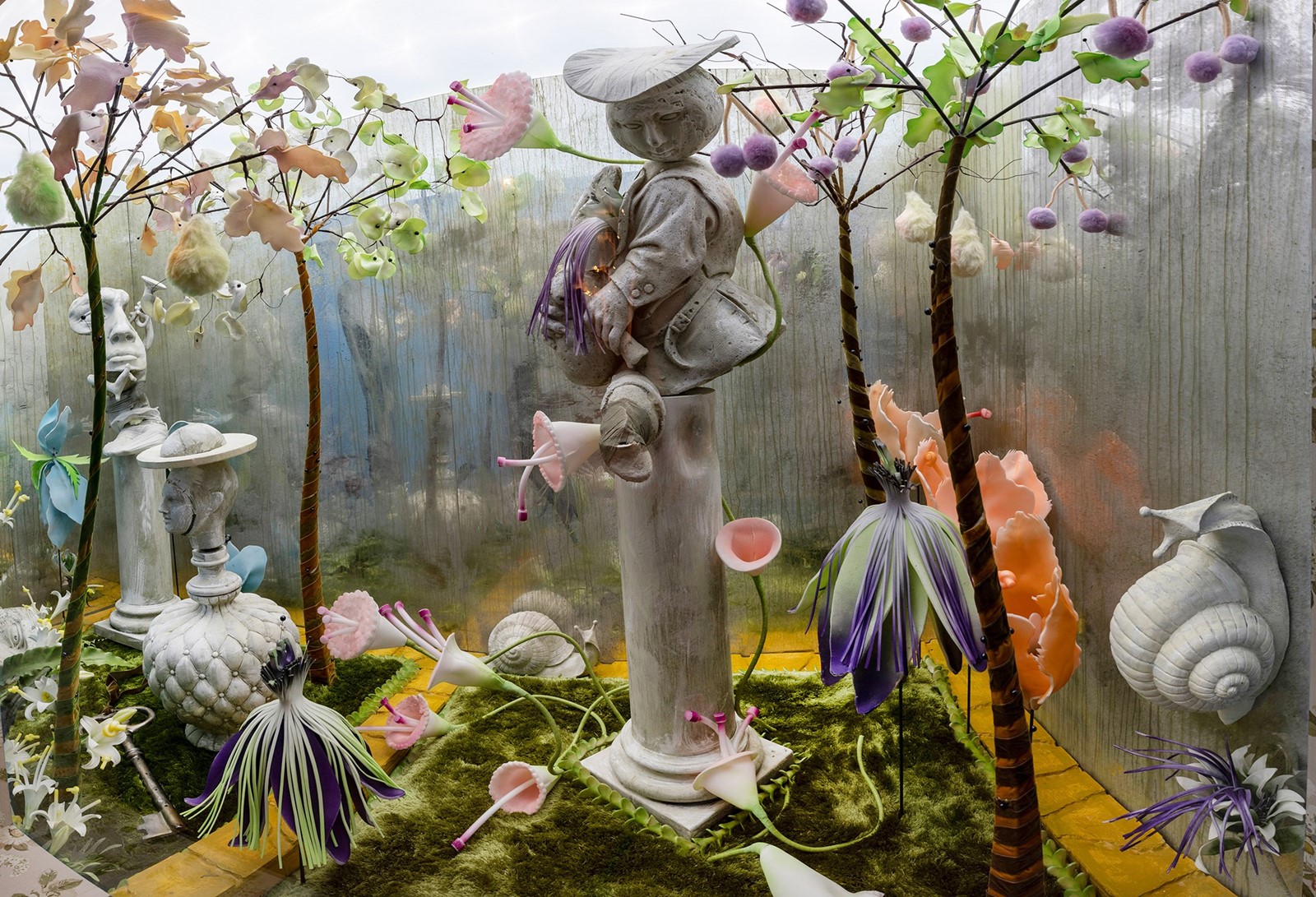
“I don’t do Instagram, but it never ceases to amaze me that all my friends do; the amount of time they take to curate, how they articulate themselves, how they inform the world of who they are. But it’s not completely truthful – things are held back on the phone that are more intimate. The chest is almost like her Instagram account. Imagine the conversations she would’ve had with her friends and family. The art of conversation, education, of playing music or her embroidery, the discussions of what her embroidery was going to articulate, what she found romantic and beautiful. It’s mind-blowing. When you’re looking at an object from so long ago and it’s in front of you and you can really study it – it’s very Orlando-esque. That’s what interested me: going through time. Going to the V&A is time travel, which is such a beautiful thing, to look at objects from different periods of history. When you look at that, you immediately find yourself contemplating the existence of the person that created the object. Where were they, what did they have? In your head, you’re really travelling.
“Going to the V&A is time travel, which is such a beautiful thing, to look at objects from different periods of history”
“The box is in the exhibition, and then the response, the photography we did. I was photographing this kid James Spencer, who feels more beautiful when he becomes a woman. He’s very much about private worlds. We photographed him up at home in Lancashire and then went down to London, and met all his friends that he goes out clubbing with. They all have their own private worlds, with what they do and how they dress up. Shona Heath then created the garden in the studio, so James could make his transformation – he became the 15-year-old girl from 1675 who made that box. His world, who he is, how he transforms and all his secrets and hidden compartments, and then how he transforms into this exquisite woman. What an extraordinarily positive thing, that this 15-year-old could inspire so much, unbeknownst to her. I think that’s magical.”

A version of this story originally appeared in AnOther Magazine A/W19, which is on sale internationally now.
Tim Walker: Wonderful Things is at the Victoria & Albert Museum, London, from September 21, 2019 – March 8, 2020.

